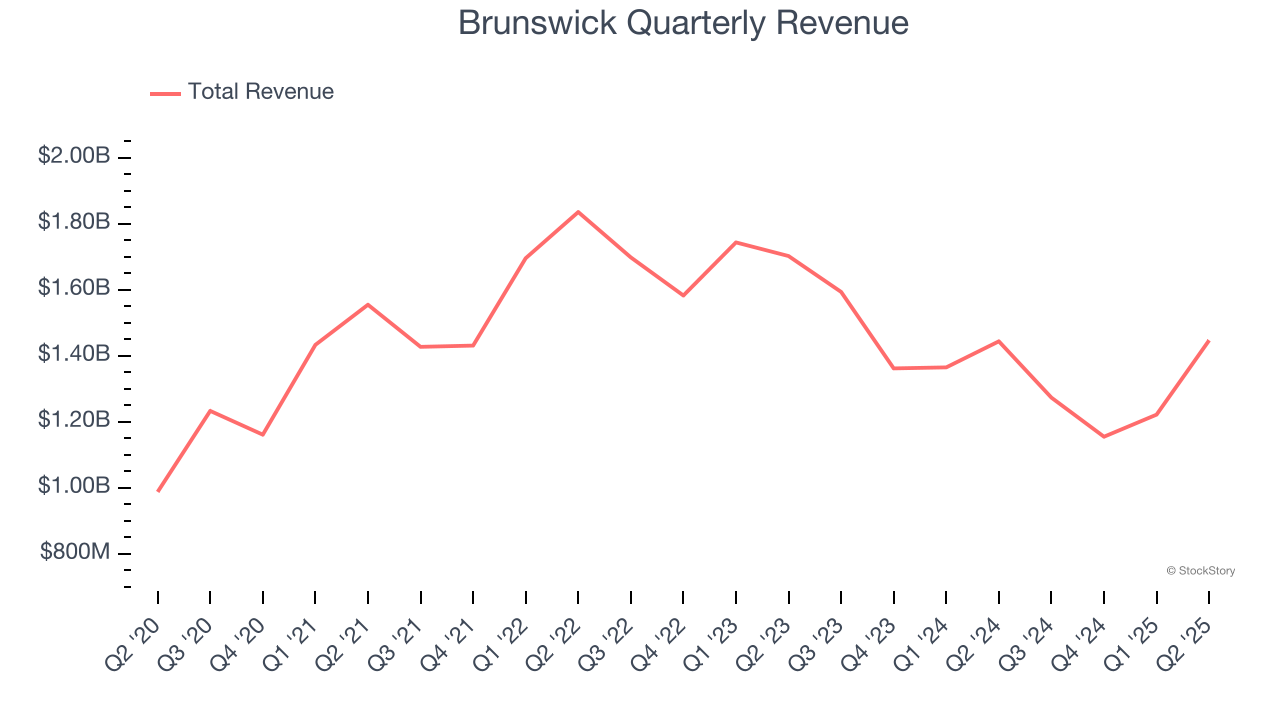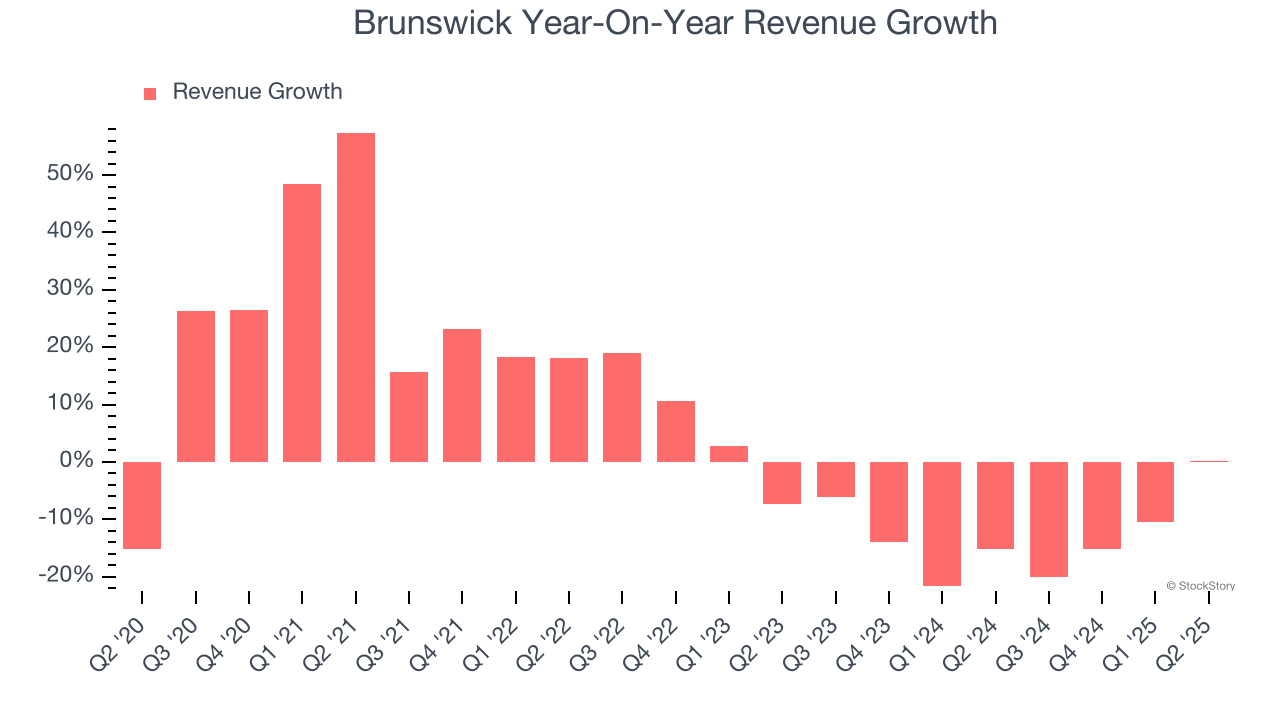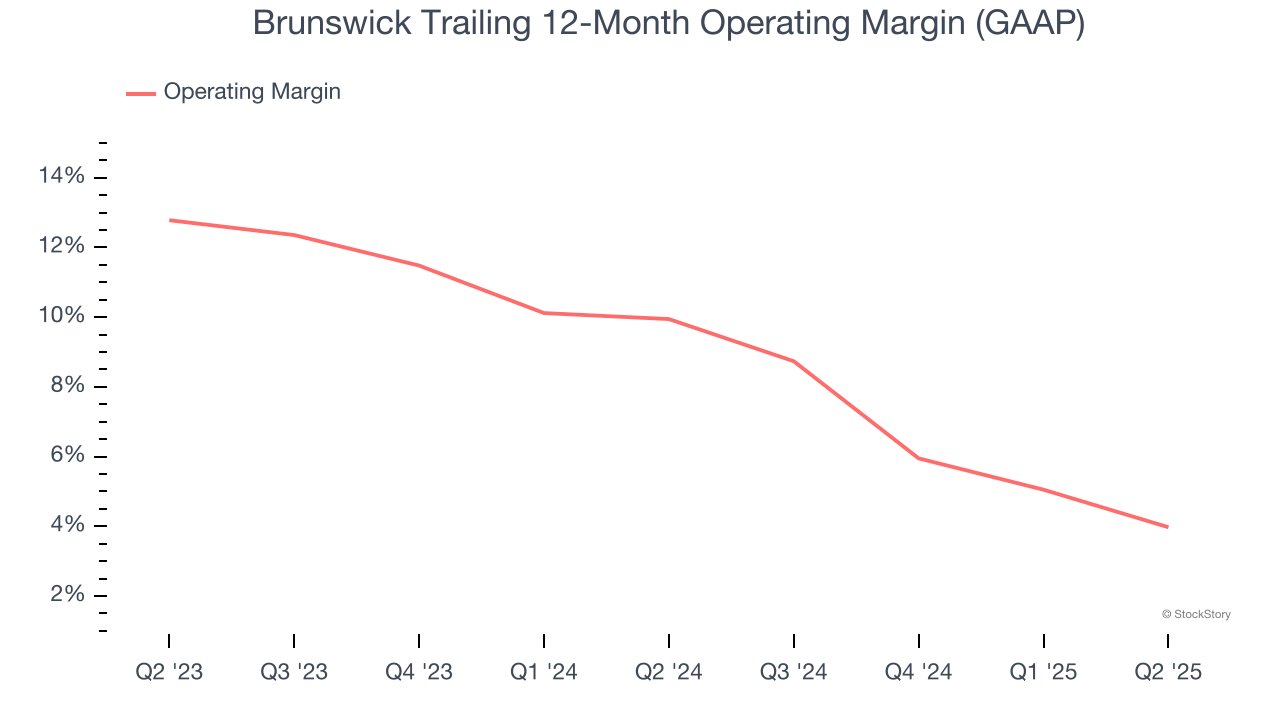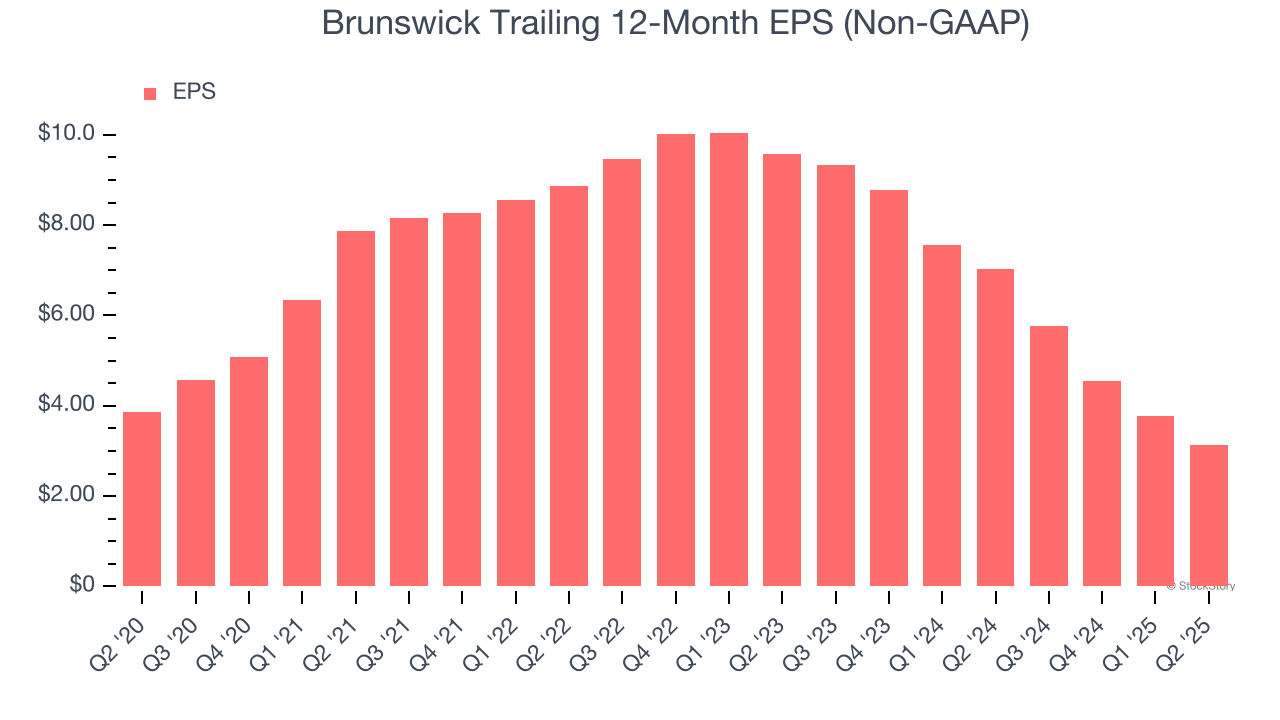
Boat and marine manufacturer Brunswick (NYSE: BC) reported revenue ahead of Wall Street’s expectations in Q2 CY2025, but sales were flat year on year at $1.45 billion. Revenue guidance for the full year exceeded analysts’ estimates, but next quarter’s guidance of $1.2 billion was less impressive, coming in 10.7% below expectations. Its non-GAAP profit of $1.16 per share was 21.8% above analysts’ consensus estimates.
Is now the time to buy Brunswick? Find out by accessing our full research report, it’s free.
Brunswick (BC) Q2 CY2025 Highlights:
- Revenue: $1.45 billion vs analyst estimates of $1.26 billion (flat year on year, 15.3% beat)
- Adjusted EPS: $1.16 vs analyst estimates of $0.95 (21.8% beat)
- Q3 guidance missed
- The company reconfirmed its revenue guidance for the full year of $5.2 billion at the midpoint
- Management reiterated its full-year Adjusted EPS guidance of $3.25 at the midpoint
- Operating Margin: 7.2%, down from 11% in the same quarter last year
- Free Cash Flow Margin: 18.7%, up from 11.4% in the same quarter last year
- Market Capitalization: $4.25 billion
Company Overview
Formerly known as Brunswick-Balke-Collender Company, Brunswick (NYSE: BC) is a designer and manufacturer of recreational marine products, including boats, engines, and marine parts.
Revenue Growth
A company’s long-term sales performance is one signal of its overall quality. Any business can put up a good quarter or two, but the best consistently grow over the long haul. Regrettably, Brunswick’s sales grew at a sluggish 5.8% compounded annual growth rate over the last five years. This was below our standard for the consumer discretionary sector and is a poor baseline for our analysis.

Long-term growth is the most important, but within consumer discretionary, product cycles are short and revenue can be hit-driven due to rapidly changing trends and consumer preferences. Brunswick’s performance shows it grew in the past but relinquished its gains over the last two years, as its revenue fell by 13% annually. 
This quarter, Brunswick’s $1.45 billion of revenue was flat year on year but beat Wall Street’s estimates by 16.4%. Company management is currently guiding for a 5.8% year-on-year decline in sales next quarter.
Looking further ahead, sell-side analysts expect revenue to grow 1.6% over the next 12 months. While this projection suggests its newer products and services will fuel better top-line performance, it is still below the sector average.
Software is eating the world and there is virtually no industry left that has been untouched by it. That drives increasing demand for tools helping software developers do their jobs, whether it be monitoring critical cloud infrastructure, integrating audio and video functionality, or ensuring smooth content streaming. Click here to access a free report on our 3 favorite stocks to play this generational megatrend.
Operating Margin
Operating margin is a key measure of profitability. Think of it as net income - the bottom line - excluding the impact of taxes and interest on debt, which are less connected to business fundamentals.
Brunswick’s operating margin has shrunk over the last 12 months and averaged 7.1% over the last two years. The company’s profitability was mediocre for a consumer discretionary business and shows it couldn’t pass its higher operating expenses onto its customers.

This quarter, Brunswick generated an operating margin profit margin of 7.2%, down 3.8 percentage points year on year. This contraction shows it was less efficient because its expenses increased relative to its revenue.
Earnings Per Share
We track the long-term change in earnings per share (EPS) for the same reason as long-term revenue growth. Compared to revenue, however, EPS highlights whether a company’s growth is profitable.
Sadly for Brunswick, its EPS declined by 4.2% annually over the last five years while its revenue grew by 5.8%. This tells us the company became less profitable on a per-share basis as it expanded due to non-fundamental factors such as interest expenses and taxes.

In Q2, Brunswick reported EPS at $1.16, down from $1.80 in the same quarter last year. Despite falling year on year, this print easily cleared analysts’ estimates. Over the next 12 months, Wall Street expects Brunswick’s full-year EPS of $3.13 to grow 27.4%.
Key Takeaways from Brunswick’s Q2 Results
We were impressed by how significantly Brunswick blew past analysts’ revenue expectations this quarter. We were also glad its full-year revenue guidance exceeded Wall Street’s estimates. On the other hand, its revenue guidance for next quarter missed and its EPS guidance for next quarter fell short of Wall Street’s estimates. Zooming out, we think this was a mixed quarter. Investors were likely hoping for more, especially from the next quarter's outlook, and shares traded down 7.2% to $60.01 immediately following the results.
Big picture, is Brunswick a buy here and now? What happened in the latest quarter matters, but not as much as longer-term business quality and valuation, when deciding whether to invest in this stock. We cover that in our actionable full research report which you can read here, it’s free.







